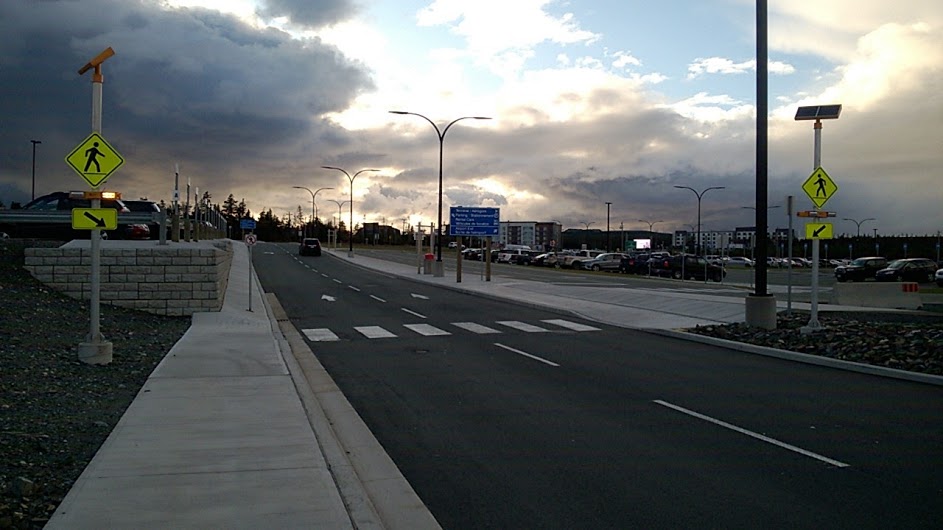
KJIPUKTUK (Halifax) – In Nova Scotia pedestrians and cyclists are particularly vulnerable to accidents. It doesn’t need to be that way. There are measures that can be put in place, other countries have done so, and it is paying off.
Two very disturbing facts should be the driving force for major changes on our roads. Fact 1: As a pedestrian or cyclist, you are more likely to be involved in a severe accident in Nova Scotia than any other road user. Fact 2: Pedestrian related incidents are the greatest single cause of child death in Atlantic Canada. Cycle related injuries are also a very significant cause of child injuries and death.
Nova Scotia’s leadership isn’t oblivious to this issue, and the proposed new Traffic Safety Act seeks to protect “vulnerable road users” by increasing fines for offences involving cyclists, pedestrians and wheelchair users.
But as every regular pedestrian and cyclist knows, it is the fundamental conditions on our roads which make our daily journey so treacherous. No thanks to those conditions, I’m 100% confident that close encounters with traffic will continue to be a daily part of our travel, regardless of fines increasing by a few hundred dollars.
What’s going on in Europe?
Europe has the road conditions we need but are nowhere near achieving – twenty to forty percent of all journeys are by walking or cycling, while accidents involving vulnerable road users are decreasing.
Yet Europe is not known for its laws which focus on road user behaviour; for example no country has law which makes wearing a cycle helmet mandatory for all, neither (says the World Health Organisation) are many European country laws adequate for other safety related offences including drink driving and speeding.
Europe has never enjoyed a special breed of considerate and safe drivers, neither do many parts of it enjoy superior weather and flat terrain. Its streets are popular and superior for use by pedestrians and cyclists because road conditions are safer and give them more infrastructure, thought and priority. Crosswalk design and light controls are leagues ahead of what we curse our way across here. Signalised intersection design and lights reduce and even eliminate conflict between vulnerable road users and motorized traffic. There are more sidewalks and dedicated cycle routes which provide linked-up safe routes from the suburbs to urban cores. Finally and most crucially, European residential and commercial shopping streets frequently boast extensive physical traffic calming measures combined with lower default legal speed limits of 30km /20m per hour. When I drive through a residential zone in Europe, I think 30 km without even looking at the speed signs.
Professor Weiss concludes his research assessing what vulnerable road user law may achieve in New Zealand as follows:
“Since we are in a car dominant culture, how realistic is it that we try to enforce the notion that the road is a shared space when most of the evidence, training, laws and feedback to drivers is to the contrary? ….Hoping that a law, by itself, will have any measurable effect on changing driver behaviours and Copenhagnize our transportation system is naive”
So bearing in mind that law is not a magic wand that can improve road conditions for those who need safety the most, what laws could go a long way towards making road conditions safer for vulnerable road users?
Three proven measures we should enact
No. 1 on the list must acknowledge what both local and international research concludes loud, clear and unanimously; we must have a change in law which permits the default speed limit on our residential streets to be reduced to 40 or 30 km per hour. Our liberal government is resistant to changing this law, stating municipalities must apply to the Province for permission to reduce speed for each and every specific neighbourhood.
The Atlantic Collaborative on Injury Prevention and the Halifax based Child Safety Link set out the case for speed reductions on residential streets in Atlantic Canada comprehensively and authoritatively in their detailed reports here and here. They say: Reducing speed limits on all our residential streets significantly reduces the risks of serious injury and death for our most vulnerable road users – children.
So there isn’t a need on a case by case basis for lower residential speed limits in some neighbourhoods. We simply need lower legal speed limits everywhere there are children and traffic outside their homes currently travels at 50 km.

Another crucial area of legal reform must be to allow infrastructure which improves protection for vulnerable road users. Our current Road Traffic Act and its associated regulations provide strict direction on many aspects of our street infrastructure; for example what traffic lights must be used, also road signage specifications. Those dire black and white crosswalk signs which are not seen and don’t cause drivers to slow down and watch for pedestrians are not the result of lack of imagination or desire to help out the most vulnerable road users by our local traffic authority – they are due to our provincial traffic regulations.
These prescriptive infrastructure requirements prevent our local traffic authorities from improving our infrastructure based on what vulnerable road users need – for example; crosswalk signage which is more visible to drivers, crosswalks which permit space for cyclists to cross as well as pedestrians, and directional traffic lights which turn red (not just green and amber) which would give pedestrians time to cross when they are protected from turning traffic.
Finally, we have a law which permits right turns on red. Although convenient for drivers, this never has any aspect of safety for road users, especially for cyclists and pedestrians who are injured or killed more than any other road user by traffic turning right on a red light. The law must go if we have any genuine intent to make our roads safer for those who need safety the most.
So the call for our Province right now is – do we rely on Nova Scotia predictably and reliably blaming other road users for the unsafe state of our roads, and even encourage that by increasing fines? Or do we actually pass a new Traffic Act and associated regulations which can ensure road conditions are made safer for everyone, especially vulnerable road users? I sincerely hope we will have the latter, which can only result from a decision to overturn outdated law which arose from a misguided intent to prioritise traffic flow over human life and safety.
See also:
- Three simple ways to make crosswalks safer
- Road safety in Nova Scotia: Not just a problem, it’s a crisis
If you walk, cycle or use a wheelchair and are affected by road safety issues, please join HRM Safe Streets for Everyone. If your local crosswalk needs a crosswalk flag, please contact the Crosswalk Safety Society.
If you can, please support the Nova Scotia Advocate so that it can continue to cover issues such as poverty, racism, exclusion, workers’ rights and the environment in Nova Scotia. A paywall is not an option, since it would exclude many readers who don’t have any disposable income at all. We rely entirely on one-time donations and a tiny but mighty group of dedicated monthly sustainers.



